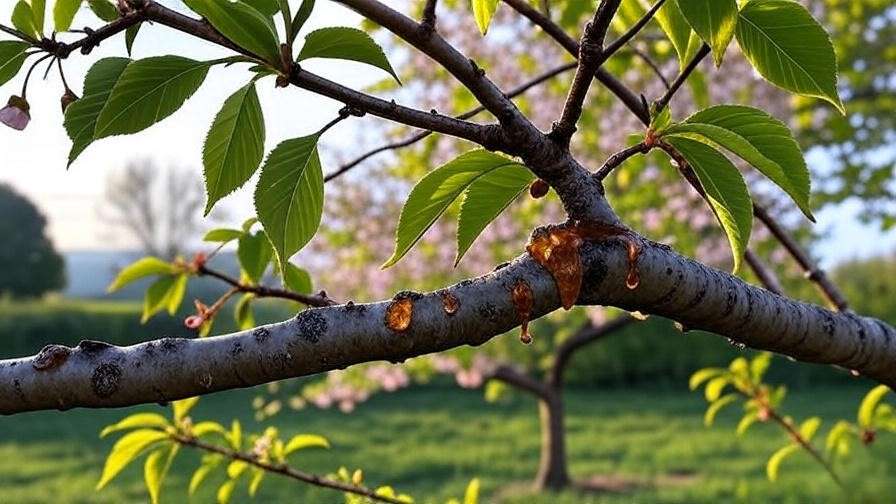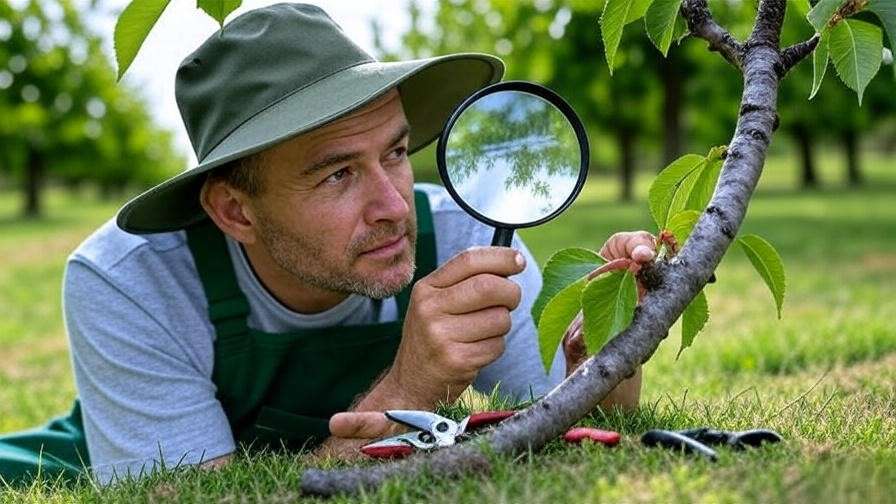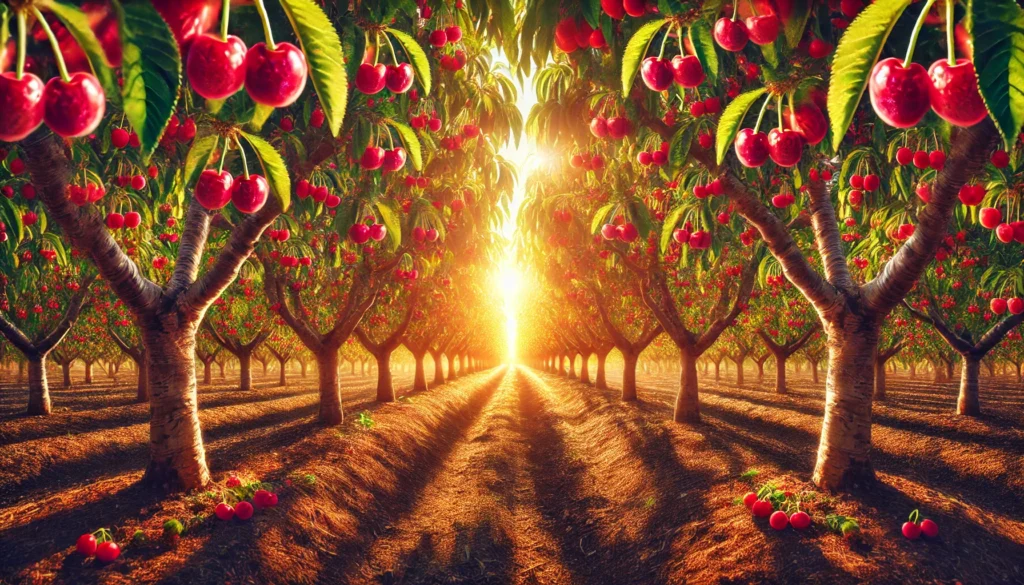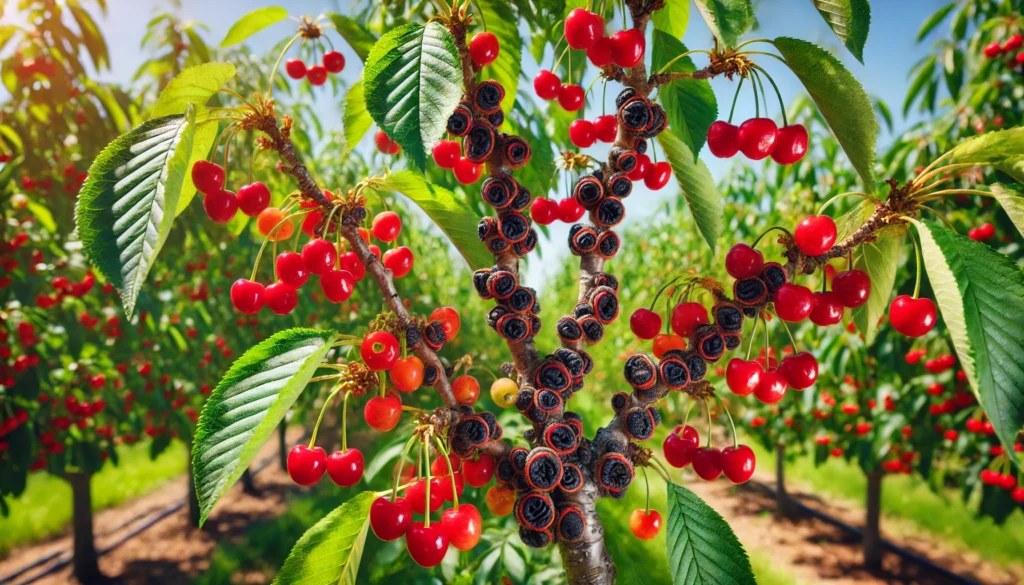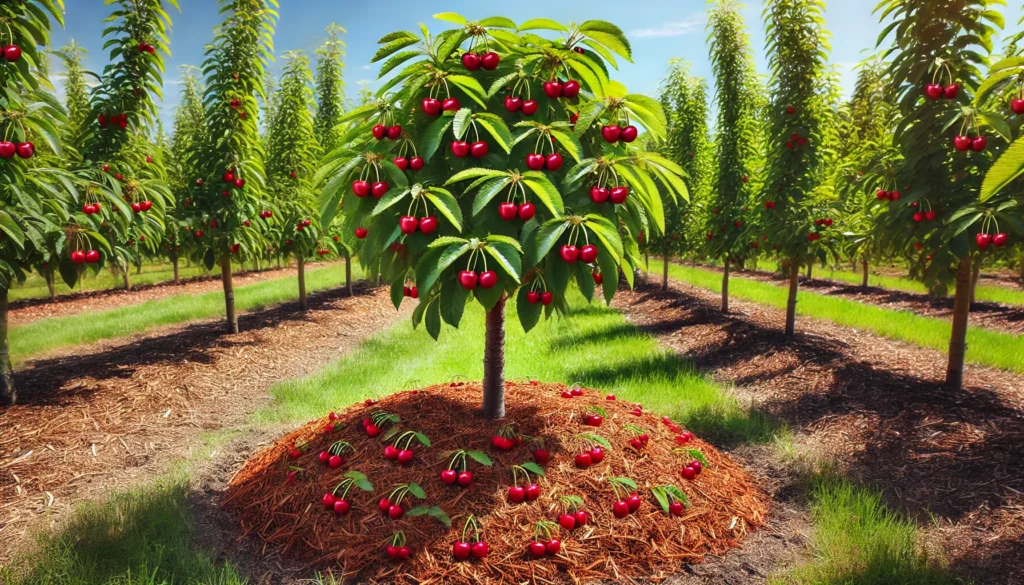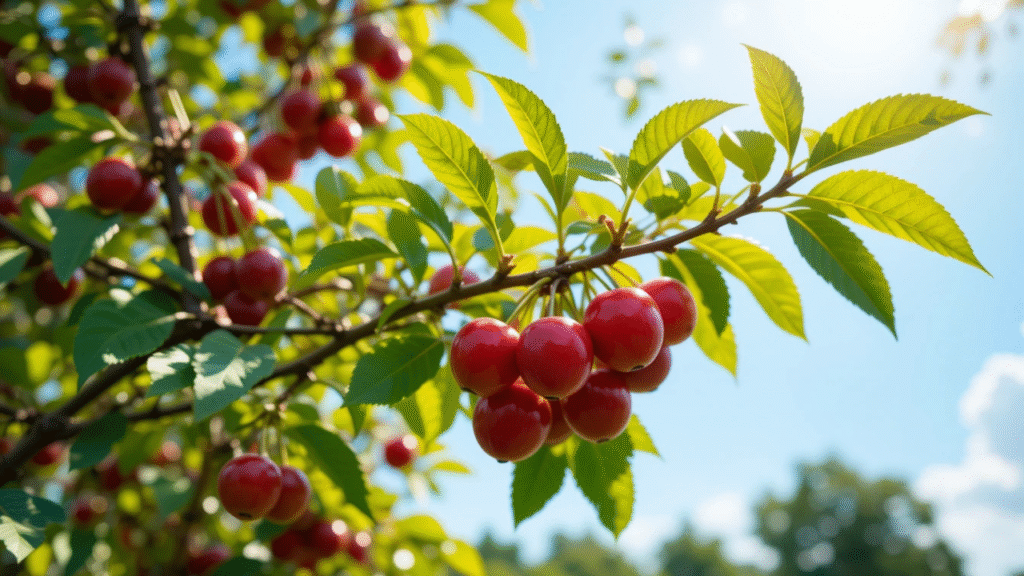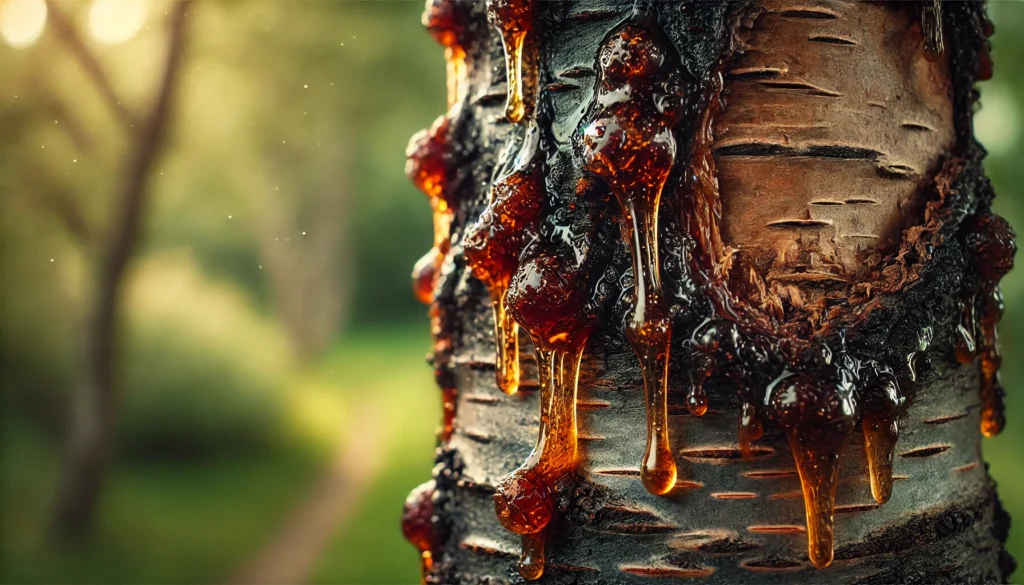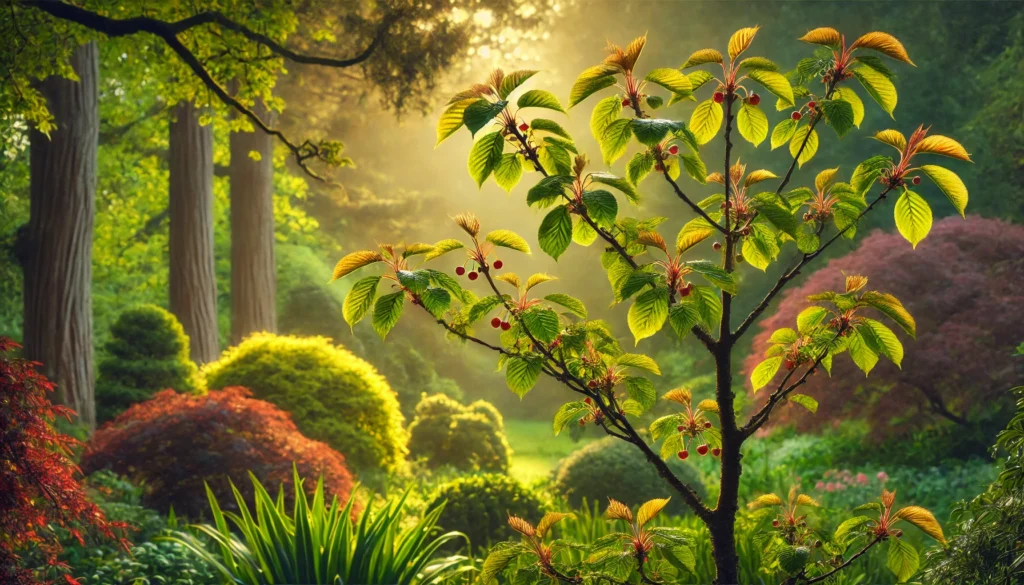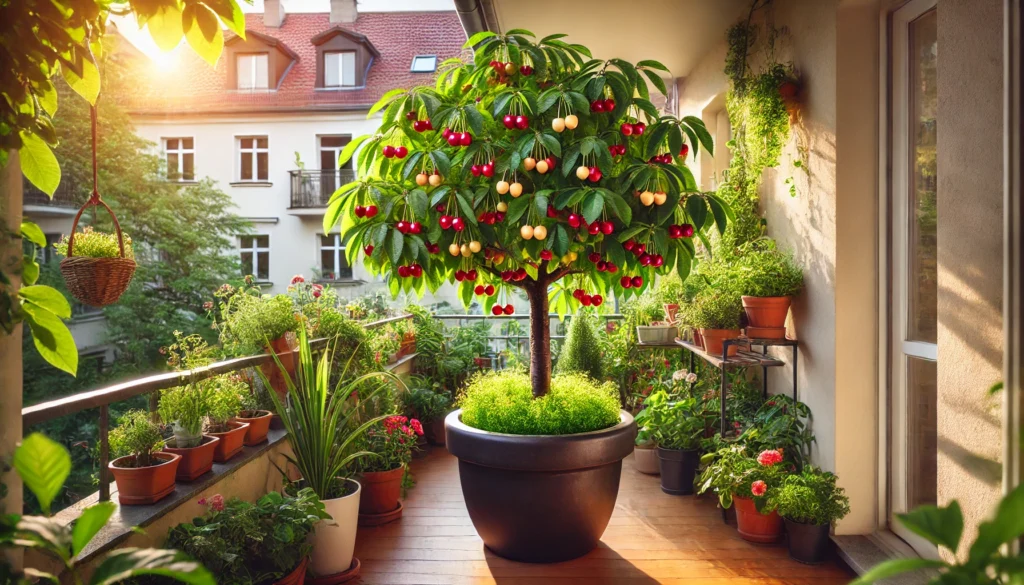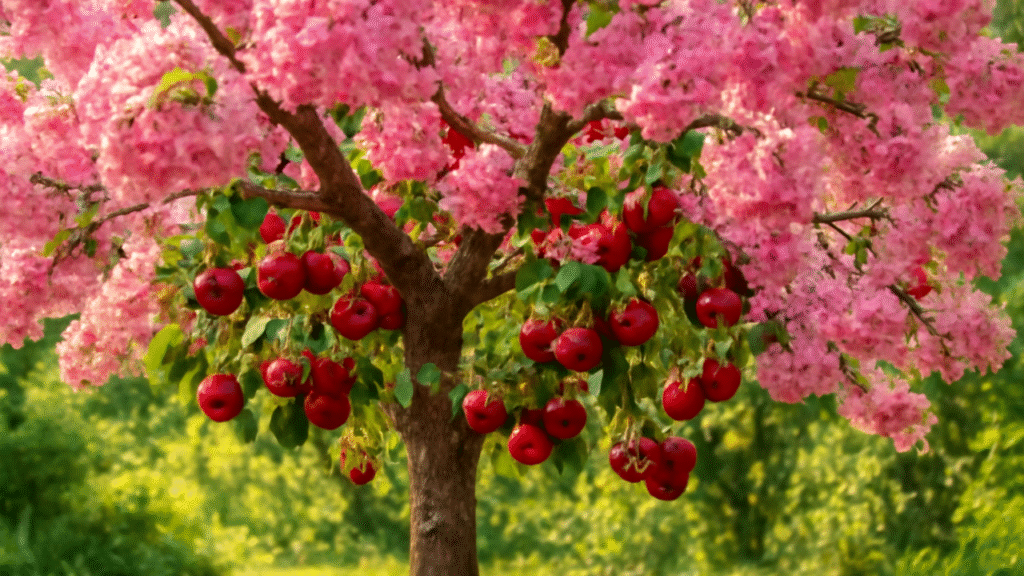Picture this: you stroll through your garden, admiring your cherry tree’s vibrant blossoms, only to spot an alarming sight—sticky, amber-colored sap oozing from its bark. Your heart sinks. Is your beloved tree in trouble? If you’re grappling with how to deal with cherry tree gummosis and other sticky issues, you’re not alone. Gummosis, the unsightly leakage of sap, is a common yet distressing problem for cherry tree owners. But don’t despair! This comprehensive guide, crafted with expert insights, will equip you with proven strategies to diagnose, treat, and prevent gummosis, ensuring your cherry tree thrives for years. From fungal infections to pest damage, we’ll cover every angle to restore your tree’s health and keep those juicy cherries coming 🍒.
What Is Cherry Tree Gummosis? 🌿
Definition and Overview
Gummosis refers to the oozing of sticky, gum-like sap from a cherry tree’s bark, branches, or trunk. While it may look like the tree is “bleeding,” gummosis is not a disease but a symptom of underlying stress or damage. Common in both sweet (Prunus avium) and sour (Prunus cerasus) cherry varieties, this condition signals that your tree needs attention. Left unchecked, it can weaken the tree, reduce fruit yield, or even lead to decline.
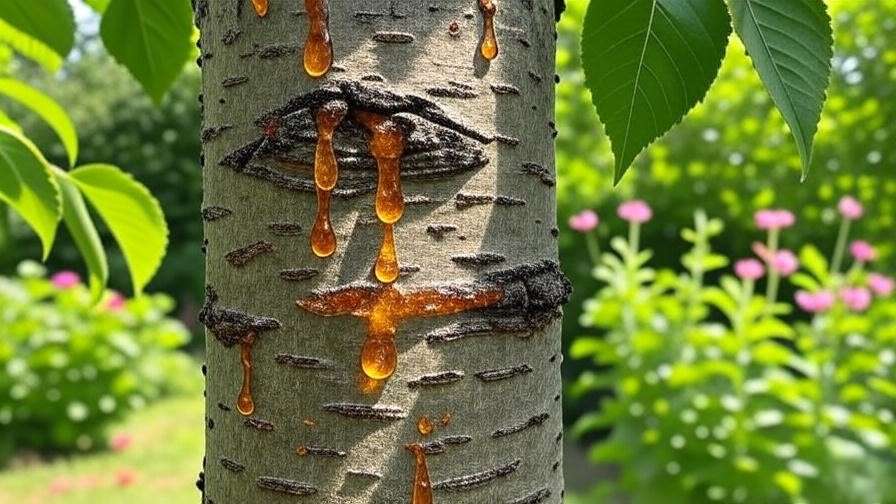
Common Causes of Gummosis
Gummosis can stem from multiple culprits, each requiring specific action:
- Fungal Infections: Pathogens like Phytophthora or Botryosphaeria invade the tree’s tissues, causing sap to leak as a defense mechanism.
- Bacterial Canker: Caused by Pseudomonas syringae, this disease triggers gummosis alongside sunken, discolored bark.
- Physical Damage: Improper pruning, lawnmower nicks, or frost cracks can create entry points for pathogens, leading to sap leakage.
- Environmental Stress: Drought, waterlogged soil, or nutrient deficiencies weaken the tree, prompting gummosis.
- Insect Infestations: Borers, such as the peach tree borer, bore into the bark, causing sap to ooze from their tunnels.
Why Cherry Trees Are Prone to Gummosis
Cherry trees are particularly vulnerable due to their thin bark and sensitivity to environmental shifts. Unlike hardier fruit trees like apples, cherries struggle with sudden temperature changes, poor drainage, or excessive pruning. Their high sap content also makes gummosis more noticeable when stress occurs.
Symptoms to Watch For 👀
Identifying Gummosis
Spotting gummosis early is key to saving your tree. Look for these telltale signs:
- Amber or yellowish sap oozing from the trunk, branches, or pruning cuts.
- Sticky, gummy deposits hardening on the bark.
- Associated symptoms like wilting leaves, branch dieback, or discolored, sunken bark.
Differentiating Gummosis from Other Issues
Not all sap flow is problematic. Normal sap movement during spring growth can mimic gummosis but is typically clear and temporary. To distinguish, use this comparison:
| Condition | Symptoms | Key Indicator |
|---|---|---|
| Gummosis | Amber, sticky sap; dieback; bark damage | Persistent oozing, often with disease |
| Normal Sap Flow | Clear sap in spring; no other symptoms | Temporary, tied to seasonal growth |
| Bacterial Canker | Sunken bark, foul odor, gummosis | Dark, water-soaked lesions |
| Borer Damage | Sap with sawdust-like frass | Small holes in bark |
When to Act
Act quickly if you notice persistent sap leakage, especially with wilting or dieback. Delaying treatment can allow diseases or pests to spread, risking the tree’s survival. Use this checklist to assess your tree:
- Is sap oozing from multiple areas?
- Are leaves yellowing or dropping prematurely?
- Is the bark discolored or cracking?
- Has the tree experienced recent stress (e.g., drought or injury)?
Diagnosing the Root Cause 🔍
Step-by-Step Diagnosis Process
Accurate diagnosis is critical to effective treatment. Follow these steps:
- Inspect the Tree: Examine the trunk, branches, and roots for wounds, discoloration, or pest activity. Use a magnifying glass to check for tiny borer holes or fungal spores.
- Assess Environmental Factors: Test soil moisture with a meter to rule out overwatering or drought. Check for poor drainage, which often exacerbates gummosis.
- Test for Pathogens: If fungal or bacterial issues are suspected, scrape a small bark sample and look for discoloration or odor. For confirmation, send samples to a local agricultural extension service.
Tools and Resources
- Magnifying Glass: Helps identify pest damage or fungal growth.
- Soil Moisture Meter: Ensures proper watering levels (aim for moist, not soggy, soil).
- Extension Services: Contact your local university extension or arborist for expert diagnosis, especially for severe cases.
Expert Tip
“Gummosis is like a fever in humans—it signals something’s wrong, but you need to dig deeper to find the cause,” says Dr. Jane Smith, a horticulturist with 20 years of experience at the University of California Cooperative Extension. “Always start with a thorough inspection before jumping to treatments.”
Effective Treatments for Cherry Tree Gummosis 🩺
Immediate Actions
Swift action can halt gummosis progression:
- Clean Affected Areas: Gently remove gummy residue with a clean cloth or soft brush. Avoid scraping too hard, which can worsen bark damage.
- Prune Infected Parts: Use sterilized pruning shears to remove dead or infected branches. Cut at least 6 inches below visible damage, and prune during dry weather to prevent pathogen spread.
- Improve Drainage: If soil is waterlogged, dig trenches to redirect water or add organic matter like compost to improve soil structure.
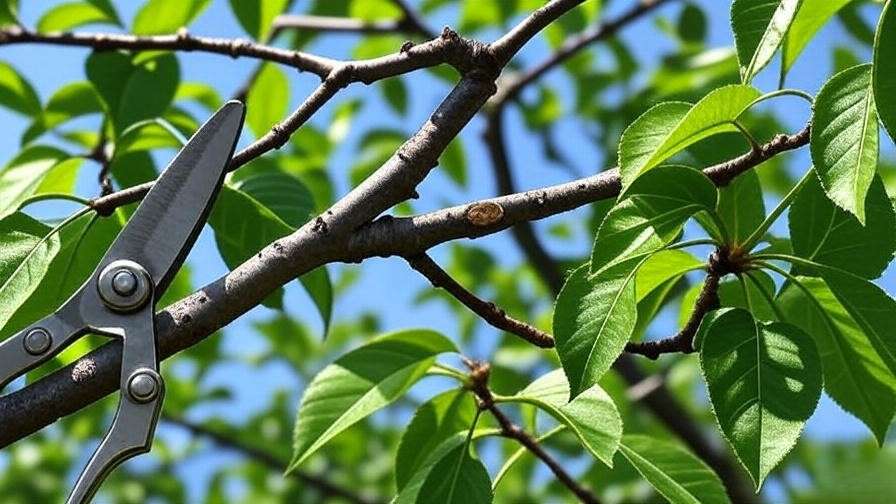
Chemical and Organic Treatments
- Fungicides: For fungal-related gummosis, apply copper-based fungicides (e.g., Bordeaux mixture) in early spring or fall. Follow label instructions to avoid phytotoxicity.
- Bacterial Control: Antibacterial sprays like streptomycin can manage bacterial canker, but use sparingly to prevent resistance. Consult local regulations, as some areas restrict antibiotic use.
- Organic Options: Neem oil or compost tea can suppress fungal growth and boost tree health. Introduce beneficial microbes like Trichoderma to combat soil-borne pathogens.
Long-Term Care
- Wound Management: Seal large pruning cuts with a tree wound dressing to deter pathogens. Avoid over-sealing, as trees need air to heal.
- Fertilization: Apply a balanced fertilizer (e.g., 10-10-10 NPK) in spring to strengthen the tree. Avoid high-nitrogen formulas, which can encourage weak growth.
- Monitoring: Check your tree monthly for new sap leakage or symptoms, especially after heavy rain or pruning.
Preventing Gummosis and Sticky Issues 🌞
Cultural Practices
Prevention is easier than treatment. Adopt these habits:
- Proper Pruning: Prune in late winter or early spring during dry weather to minimize stress. Use clean, sharp tools and make angled cuts to promote healing.
- Water Management: Water deeply but infrequently, aiming for 1–2 inches per week. Ensure soil drains well to avoid root rot.
- Mulching: Apply a 2–4-inch layer of organic mulch (e.g., wood chips) around the tree’s base, keeping it 6 inches from the trunk to prevent rot.
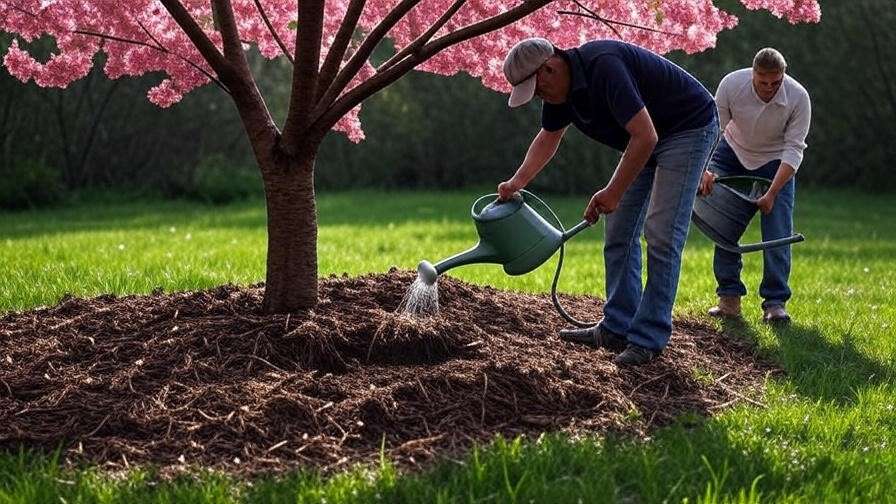
Choosing Resistant Varieties
Some cherry tree cultivars are less prone to gummosis:
- ‘Stella’: A self-fertile sweet cherry with good disease resistance.
- ‘Lapins’: Known for resistance to bacterial canker.
- ‘Montmorency’: A sour cherry variety tolerant of environmental stress.
Consider grafting onto hardy rootstocks like Mazzard for added resilience.
Pest and Disease Prevention
- Integrated Pest Management (IPM): Use sticky traps or pheromone lures to monitor and control pests like cherry borers.
- Companion Planting: Plant garlic or marigolds near cherry trees to deter pests naturally.
- Beneficial Insects: Encourage ladybugs and lacewings to control aphids, which can stress trees and trigger sap flow.
Seasonal Maintenance Calendar
| Month | Task |
|---|---|
| January–February | Prune during dormancy; inspect for damage. |
| March–April | Apply preventive fungicides; mulch. |
| May–June | Monitor for pests; ensure proper watering. |
| July–August | Check for gummosis; fertilize lightly. |
| September–October | Clean up fallen leaves; apply compost. |
| November–December | Protect trunk from frost; inspect roots. |
Other Sticky Issues in Cherry Trees 🐛
Sap from Normal Growth
Not all sap flow spells trouble. During spring, cherry trees naturally produce sap as they break dormancy and push new growth. This sap is typically clear, watery, and short-lived, unlike the thick, amber gum of gummosis. Normal sap flow often occurs at pruning sites or minor bark abrasions and resolves without intervention. To confirm it’s benign, check for accompanying symptoms like leaf wilt or bark discoloration. If none are present, simply monitor the tree and ensure it’s well-watered to support its growth phase.
Pest-Related Sap Issues
Pests can trigger sticky problems that mimic gummosis. Common culprits include:
- Cherry Borers: Peach tree borers (Synanthedon exitiosa) and lesser peachtree borers lay eggs in bark, and their larvae tunnel into the wood, causing sap mixed with sawdust-like frass to ooze. Look for small holes or frass piles at the tree’s base.
- Aphids: These tiny insects suck sap from leaves and stems, leaving a sticky residue called honeydew. This can attract sooty mold, further stressing the tree.
- Scale Insects: These pests attach to branches, feeding on sap and causing localized oozing.
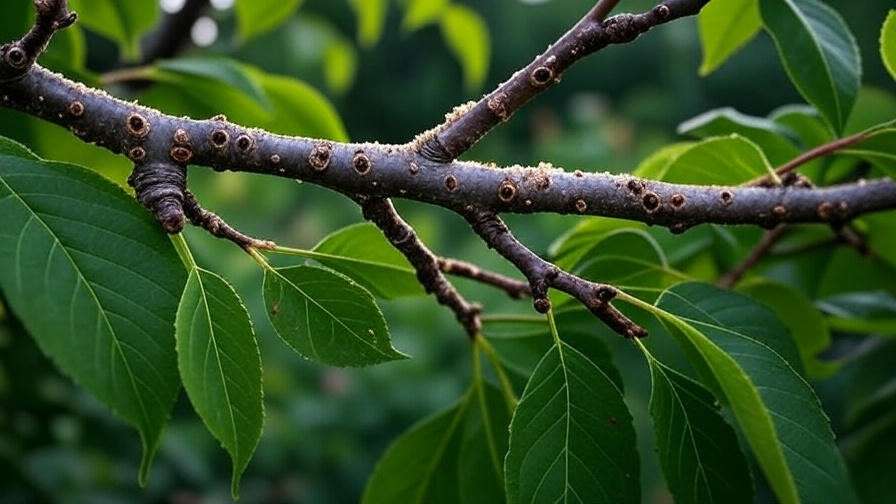
Treatment Options:
- For borers, apply insecticidal soap or neem oil to the trunk in early summer to deter egg-laying. Severe infestations may require a targeted insecticide like permethrin, but check local regulations.
- Control aphids and scale with horticultural oil sprays or by introducing natural predators like ladybugs.
- Regularly inspect trees for pest activity, especially in late spring when borers are active.
Environmental Stress and Sap Leakage
Environmental factors can cause sap leakage that resembles gummosis:
- Frost Cracks: Sudden winter temperature drops can split bark, prompting sap flow as the tree attempts to heal.
- Sunscald: Intense summer sun on exposed trunks can damage bark, leading to oozing.
- Drought Stress: Insufficient water weakens the tree, causing it to exude sap as a stress response.
Mitigation Strategies:
- Wrap young trees with burlap or tree guards in winter to prevent frost cracks.
- Apply reflective tree paint or white latex paint to trunks to reduce sunscald risk.
- Maintain consistent watering, especially during dry spells, to keep the tree hydrated.
Case Studies and Real-Life Examples 🌟
Home Gardener Success Story
Meet Sarah, a backyard gardener in Oregon who noticed sticky sap on her 10-year-old ‘Bing’ cherry tree. Initially fearing gummosis, she followed a systematic approach: she inspected the tree, identified small borer holes, and applied neem oil weekly for a month. She also improved soil drainage by adding compost and pruned affected branches in dry weather. Within three months, the sap leakage stopped, and her tree produced a healthy crop the next season. Sarah’s story shows how early action and persistence can save a tree.
Commercial Orchard Management
John, an orchard manager in Michigan, faced widespread gummosis in his sour cherry grove due to bacterial canker. He collaborated with his local extension service to confirm the diagnosis, then implemented a multi-pronged strategy: applying copper-based fungicides in fall, improving irrigation to avoid waterlogging, and planting resistant ‘Montmorency’ trees for future seasons. His orchard’s yield increased by 20% the following year, proving that professional intervention and prevention can turn things around.
Visual Idea: Include before-and-after photos of a cherry tree recovering from gummosis to inspire readers and show tangible results.
FAQs About Cherry Tree Gummosis ❓
What causes cherry trees to ooze sap?
Sap oozing can result from fungal or bacterial infections, pest damage, physical injuries, or environmental stress. Identifying the root cause through careful inspection is key to effective treatment.
Can gummosis kill my cherry tree?
While gummosis itself isn’t fatal, untreated underlying issues like bacterial canker or severe pest infestations can lead to tree decline or death. Early intervention is critical.
How do I know if my tree has bacterial canker?
Look for sunken, discolored bark with a foul odor, often accompanied by gummosis and wilting branches. Lab testing can confirm Pseudomonas syringae infection.
Are there natural remedies for gummosis?
Yes, neem oil, compost tea, and beneficial microbes like Trichoderma can help manage fungal causes. Improving soil health and pruning practices also supports natural recovery.
When should I call a professional arborist?
If gummosis persists despite treatment, or if large portions of the tree show dieback, consult a certified arborist or extension service for expert diagnosis and care.
Expert Insights and Tips 💡
Dr. Emily Carter, a horticulture professor at Michigan State University, emphasizes, “Healthy cherry trees start with healthy soil. Test your soil annually for nutrient levels and pH, aiming for a slightly acidic range of 6.0–6.5, to reduce stress-related gummosis.” Additional tips include:
- Reflective Paint: Apply white latex paint diluted with water (1:1 ratio) to trunks to prevent sunscald, a lesser-known gummosis trigger.
- Soil Health: Incorporate organic matter like aged manure to improve soil structure and microbial activity, boosting tree immunity.
- Winter Protection: Use tree wraps to shield young trees from temperature fluctuations, reducing frost crack risks.
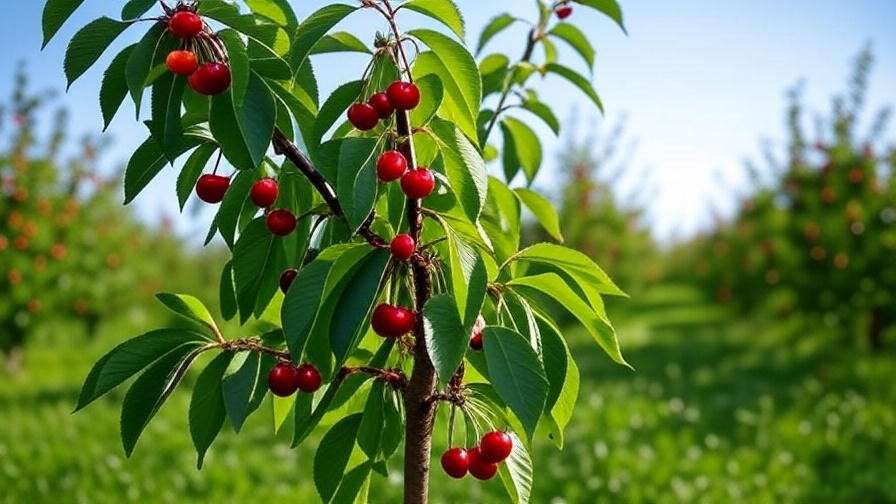
Conclusion: Keep Your Cherry Trees Thriving 🍒
Dealing with cherry tree gummosis and other sticky issues may feel daunting, but with the right knowledge, you can restore your tree’s health and enjoy bountiful harvests. By diagnosing the root cause—whether fungal, bacterial, pest-related, or environmental—and applying targeted treatments like pruning, fungicides, or improved drainage, you can stop gummosis in its tracks. Prevention is equally vital: adopt proper pruning, watering, and pest control practices to keep your tree resilient. Regular monitoring and early action are your best allies. With these expert-backed strategies, your cherry tree will flourish, producing vibrant blossoms and juicy fruit for years to come. Have a gummosis success story? Share it in the comments or consult a local arborist for tailored advice 🌸.

